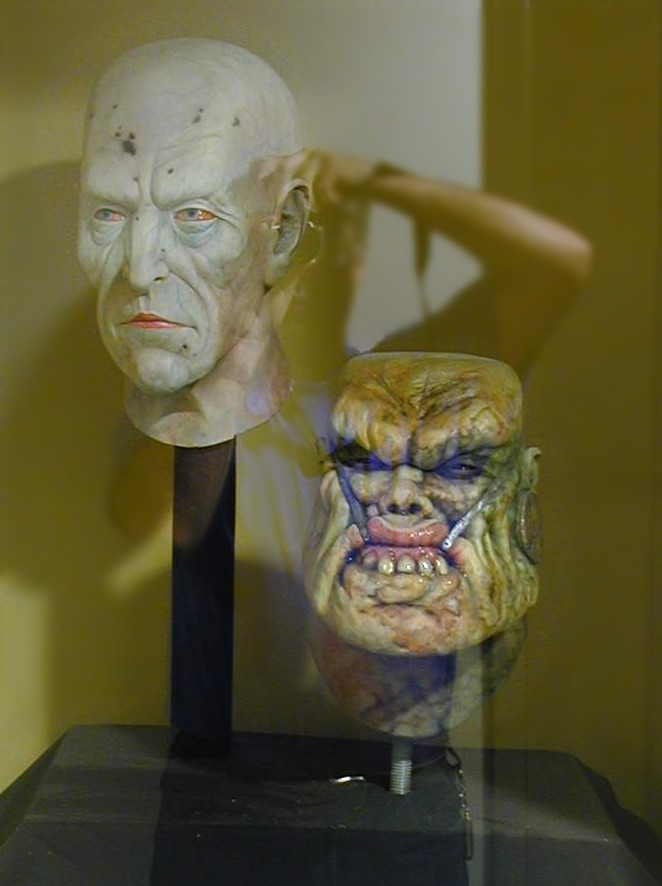Fallout talking heads were hand-made 3D masks.
They were, before the point data was imported into 3ds and animated.
No-each frame doesn't need to be saved. Modern 3D engines use a bone system, where the animation is blended between existing bones. Separate motions for hands, arms, head, torso, etc, can all be blended on the fly. So, for example, the legs are separate from the body. So you have a walking set for the legs, and a sword swing for the torso and arms. This allows you to have a character walk, or walk and swing a sword, without the need to save 'frames' for each animation.
But you can use a similar layer system in a 2D environment as well. The point is, if you want to animate a 3d object, you're forced to save the animation data in static frames. If you want to move or rotate an object in-engine, the intermediate stages between the positions are computed for you, but that's a process independent of whether you're doing so in 2D or 3D.
Personally, my game has 3700 frames of animation for the main character (roughly) and that will likely double by the end of it. And thats for ONE character, because Im using a traditional 2D Sprite based system. Trust me-I know all of the downfalls!
But I've done character animation in both 2D and 3D, and in terms of asset management they both have a tendency of getting bloated. If you have a good system in place to counter that, there shouldn't be any problem.
Again, I was under the impression that we were talking about Project Eternity. The level of detail has absolutely nothing to do with it.
It does for 3D characters. I mean, sure, if you're happy with Grim Fandango polycounts, mapping and animation, you can pump out characters with a minimum of effort. The same applies to 2D but to a much lesser extent.
If you have a character with a different helm, sword, shield, or the countless other items that would adorn one of these little folk, there is NO valid argument to NOT use a 3D system.
If you have a particularly limited number of accessories, or if all of them fall into very similar categories that allow for graphical abstraction, it might not be worth the effort of going for 3D. It wouldn't simplify the creation process, but it would minimize resource costs.
Here's an argument, though. Suppose you're using a graphical style that's reliant on more than the repositioning or rotating of objects, where pieces of equipment go beyond what's physically possible or display what may be considered as alien properties. You might want equipment fusing into the character, breaking the fourth wall, changing size and shape, liquefying and solidifying etc. While all of these effects are quite possible in 3D, the process of implementing them is more straightforward in 2D.
No. Level designers should be level designers. Its 2 completely different disciplines.
I disagree. In my opinion, you can't take art out of design, nor design out of art.
You can use 3D Assets in 2 point perspective. But if you are using 2 point perspective, there are no scale changes in terms of depth (moving 'towards' or 'away' from a specific point), because there is no depth. There are only 2 points...X and Y.
I'm getting confused by your use of the term 2 point perspective.
Ignoring this, there's no real limit imposed on rendering an orthogonal image stretched in order to give the illusion of depth.
You have to make exceptions for objects and characters on the map, naturally, giving them an upright rather than stretched appearance, but by altering their scale depending on their position in regards to the viewpoint the effect still passes for simulated depth.
Well, the camera can be moved in Project Eternity, so the perspective is not fixed (static).
True, here's what it looks like when you move the camera:








































